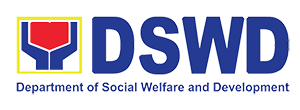To gain more insights on how the disaster relief and recovery efforts were undertaken in the aftermath of the 2004 Aceh Tsunami in Indonesia, select officials and employees of the Department of Social Welfare and Development (DSWD) held on Tuesday a video conference with key individuals in Indonesia who were part of the overall disaster response.
Experts consider the Aceh post-disaster relief and recovery operations as the biggest humanitarian effort and reconstruction project in developing countries to date.
The learning exchange, which was organized through the partnership of DSWD and Asian Development Bank (ADB), focused on the Aceh experience in disaster response operations, particularly in the light of the Philippines’ own efforts following the recent calamities that hit the country, including Typhoon Yolanda.
The video conference was meant to provide the DSWD with insights on the use of the Community-Driven Development (CDD) approach, which is the strategy used by DSWD’s Kapit-Bisig Laban sa Kahirapan-Comprehensive and Integrated Delivery of Social Services (Kalahi-CIDSS) in disaster response.
CDD is a development strategy that focuses on empowering and building up the capacities of citizens and local government units so they will be able to lift their own communities out of poverty.
Kalahi-CIDSS is one of the three core poverty alleviation programs of the Department, alongside the Pantawid Pamilyang Pilipino Program and the Sustainable Livelihood Program (SLP).
Participation of ordinary citizens
DSWD Assistant Secretary and Kalahi-CIDSS Deputy National Project Director Camilo Gudmalin, who himself worked in Aceh’s disaster operations, said that the most notable characteristic of Indonesia’s experience was how the ordinary citizens became active participants in reconstruction efforts.
He said, “The communities came together to participate in identifying their problems, even in a disaster situation”.
This was affirmed by Victor Bottini, a social development specialist who served as the World Bank Resident Representative in Aceh at the time of the tsunami and who headed the four-person team in Indonesia at the video conference.
Bottini said that they chose the CDD approach as the strategy in their operations because it is the citizens themselves who were strongly affected by the tsunami.
“It’s because we’re concerned about people, not just infrastructure,” he said.
He explained that CDD makes disaster response easier because community mobilization ensures that the needs of calamity victims are met and they will also be trained to become better prepared in case of future disasters.
He went on to explain that one of the benefits of the CDD approach in disaster response is the increase in readiness of the citizens. Through CDD, people are mobilized, which in turn allows them to work together even in trying circumstances.
Bottini added, “You have a network before and after a disaster. You do not have to set up a system when the disaster hits, because it is already there.”
Asec. Gudmalin enjoined the participants of the video conference to follow Indonesia’s path of “building back better”.
Bottini advised the participants to make Kalahi-CIDSS and other CDD programs take an active part in disaster response to make communities involved in the recovery process, as this will help them return to normalcy.
Bottini shared that following the Aceh experience, he and the other implementers realized that those who worked in CDD activities had more ownership of the projects they implemented compared to those who used non-CDD strategies, because they were the ones who actively worked to accomplish these.
Asec. Gudmalin previously headed the disaster relief operations of the DSWD. He handled the Department’s operations, including but not limited to Typhoon Yolanda, the Zamboanga City armed conflict, and the September earthquake that shook the Visayas region.
National CDD program
This learning exchange is not DSWD’s first involvement with Indonesia.
The design of Kalahi-CIDSS, which was established in 2003, derived its design from Indonesia’s Kecamatan Development Program (KDP), the pioneering CDD program at that time. KDP has since evolved into a national program, the Program Nasional Pemberdayaan Masyarakat (PNPM) Mandiri.
Similarly, the DSWD is now preparing for the National Community-Driven Development Program (NCDDP), the scaling up of Kalahi-CIDSS’ CDD operations nationwide.
The NCDDP will cover more municipalities all over the country and will also involve other national government agencies in its implementation. The program pays special attention to disaster risk reduction and management (DRRM).
Aside from covering the poorest municipalities, NCDDP will also be implemented in Typhoon Yolanda-affected municipalities within its target provinces.
Last month, the ADB committed to provide a $372.1 million emergency loan, which will include coverage of the support of NCDDP’s DRRM component.
Similarly, World Bank pledged $480 million loan for the NCDDP, which may be used for disaster emergency response.
These commitments were made after Typhoon Yolanda hit the Philippines.
Aside from DRRM, the NCDDP will also look into other thematic areas, including gender, conflict, environment protection, and the participation of Indigenous Peoples (IPs). ###


